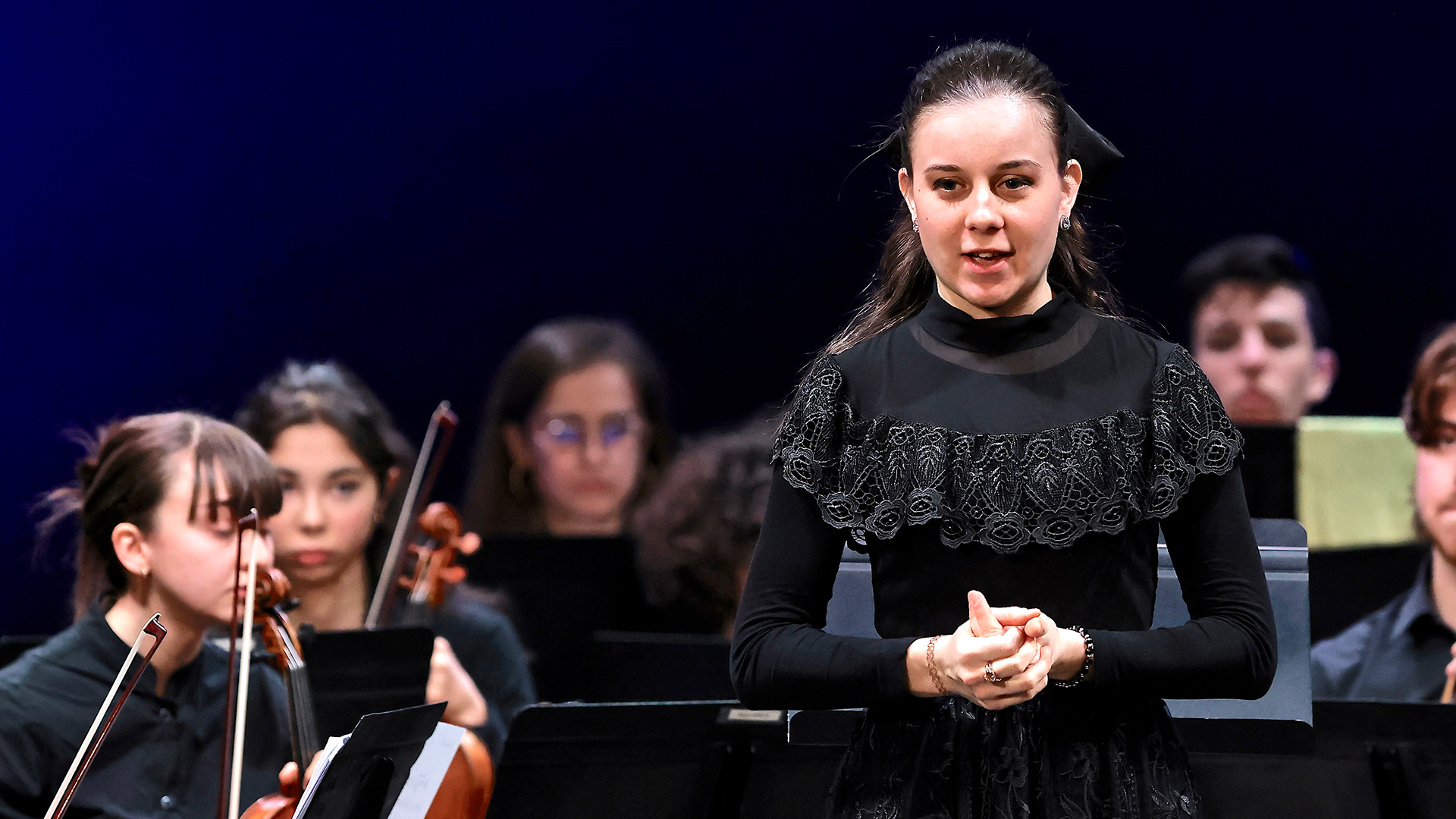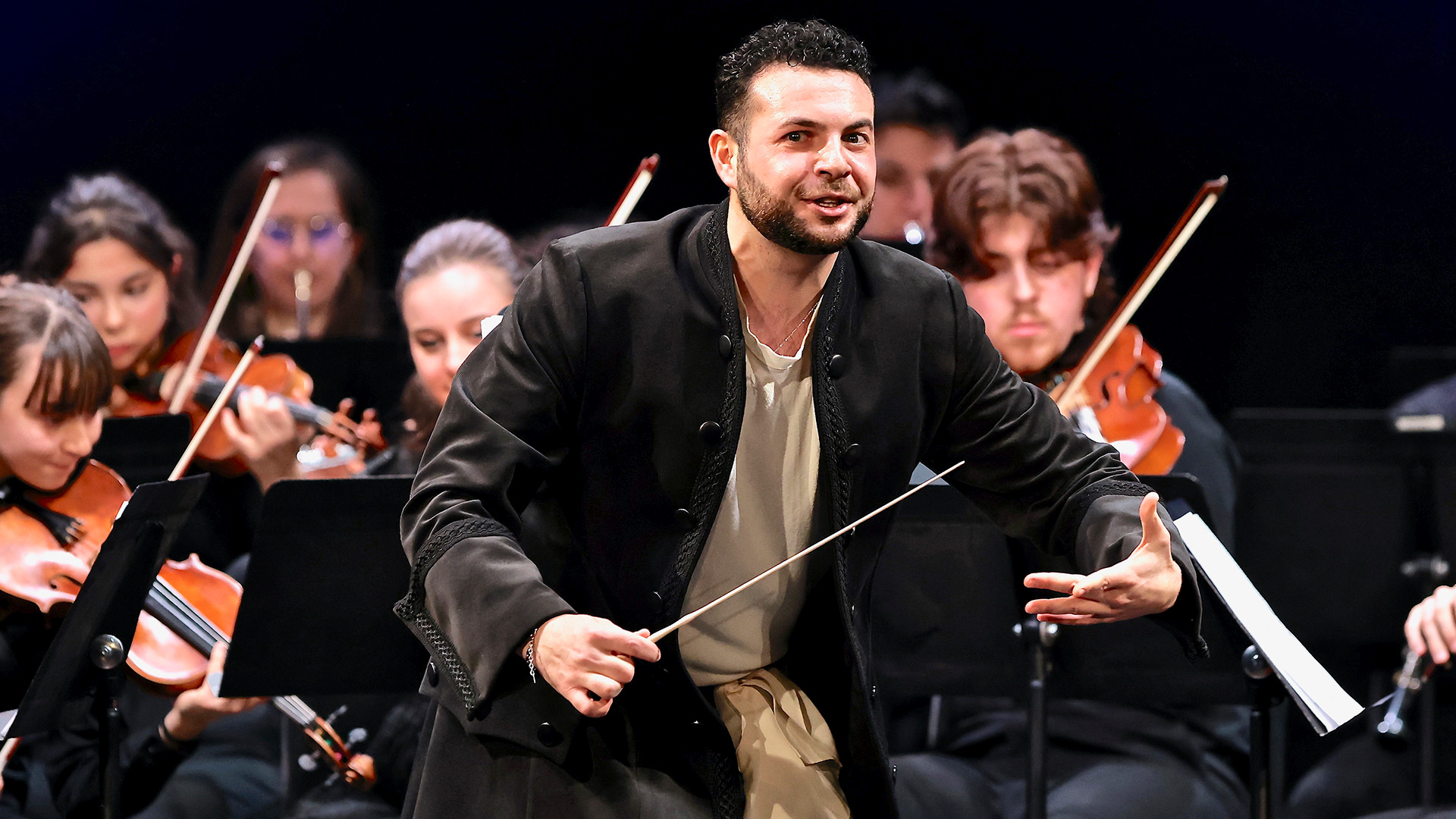IL MAESTRO DI CAPPELLA
Intermezzo in music in one act
Music by Domenico Cimarosa
Libretto by unknown author
Il maestro di cappella
Gabriele Barria / Carlo Sgura
Paganini Junior Chamber Orchestra of the Conservatorio ‘Niccolò Paganini’ in Genoa
IL CONTE UGOLINO
Cantata
Music by Gaetano Donizetti
Text by Dante Alighieri
Baritone
Gabriele Barria / Carlo Sgura
Piano
Davide Cavalli / Mattia Torriglia
Il maestro di cappella is an intermezzo composed by Domenico Cimarosa around 1790. There are no certain sources about the date of composition, as well as the origin of the libretto or the identity of the librettist. In keeping with a common taste for satire of the theatrical and musical milieu, the text depicts a rousing orchestral rehearsal in which the sole character, the maestro di cappella, attempts to direct the instrumental ensemble in the performance of an aria ‘di stil sublime’. Although the text is a monologue, it is precisely with the orchestra professors and their instruments that the maestro dialogues in an attempt to achieve his goal: to emulate the old masters, those who were capable of truly expressing intentions and passions through music. The pedantic maestro tries to manage the orchestra by humming everyone’s parts, as the instrumentalists do not respect each other’s timing, until he succeeds in achieving the desired result. The intermezzo is unique both for the presence of only one character, a bass-baritone, and for its structure, which is not divided into arias and recitatives. It is possible that Cimarosa composed Il maestro di cappella by expanding on an aria or comic cantata he had previously created, taking up the theme he loved of theatrical satire, which he had already explored in Impresario in angustie (1786).
Il conte Ugolino is a cantata that Gaetano Donizetti composed in 1826, inspired by Dante’s XXXIII Canto dell’Inferno. Nicola Antonio Zingarelli had previously set the same Dante piece to music in the cantata for soprano and strings L’Ugolino, which Donizetti probably heard during his stay in Naples. In the famous Canto, Dante retells the grim story of Count Ugolino della Gherardesca, a Ghibelline politician with a tyrannical approach to power. After antagonising several influential families, the Count was betrayed and imprisoned without food or water together with his children and grandchildren. In Dante’s reading, the Count recounts having helplessly witnessed the death of his four children. With subtle ambiguity, Dante hints at a possible episode of necrophagia in which the Count is said to have been a protagonist, without however making it explicit: ‘Poscia, più che il dolor, poté il digiuno’ (‘Afterwards, more than sorrow, fasting could’). When Dante encounters Ugolino, in the ninth circle of Hell, the Count is immersed in the icy waters of the Cogito with the other traitors to his country, and he serves his sentence by devouring the skull of his main political enemy, Archbishop Ruggeri degli Ubaldini. In his cantata, Donizetti takes Dante’s text step by step, conducting the writing of the vocal line in a declamatory style, suited to making each verse stand out clearly. The piano line also follows the same principle, enhancing the moments of greatest pathos with a careful play of accents and dynamics.


